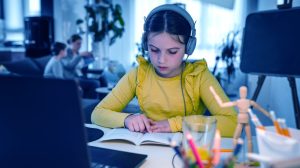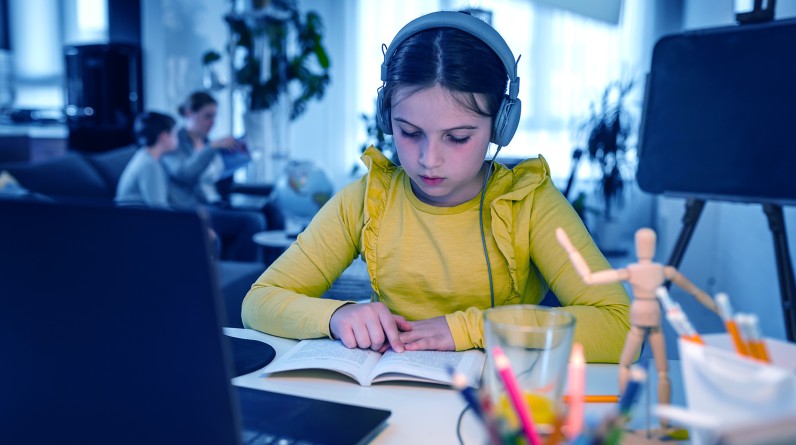Education, amid the digital revolution, has undergone the transformation, and the remote learning took its place as the norm to follow. This revolution in mindset opened the way for educators from all over the world to search for processes of active engaging students other than those beyond the classic classroom. Immediately, these tools appeared and started playing their role as the solution to the problem of online learning environment; it was EdTech with its unique range of digital solutions designed to facilitate student learning online as well as teaching. Let’s explore five imperative EdTech Tools, which transformed distant education making life easy for both teachers and students with endless engagement and accuracy.
Learning Management Systems (LMS): Organizing and Streamlining Educational Content
Learning Management System (LMS) has become a pivotal platform for the management of content, transfer of educational content, and tracking students’ progress in this era of remote education. The integration of free erp software for educational institutes can provide a cost-effective means to enhance the capabilities of LMS platforms, offering seamless management of resources, student information, and administrative tasks without additional financial burden. Such robust platforms give a whole tool set of tools and features such as course management, content creation, assessment, and analytics to teachers for their individualized lessons creation that’ll take into account individual students’ learning capabilities and styles.
Interactive Whiteboards: Fostering Collaborative Learning
In education, particularly remote education, interactive whiteboards have proven to be imperative tools that work for the benefit of a virtual classroom, bringing virtual and physical classrooms together. This electronic ecosystem empowers the teachers to develop lively lessons with rich media that does not only capture the students’ imaginations but also make them participants of their own education. Students learn to work together effectively, as learning platforms like real-time collaboration, interactive voting, and joint annotation foster a community among learners even beyond the physical distances.
Video Conferencing Tools: Facilitating Real-Time Communication and Collaboration
Online education means that efficient communication and collaboration between students is a priority for their success. The video conferencing media has proved to be the most powerful tool for the educationists remotely and the learners that can be used for interaction and engagement in real-time all over the world. Students get the ability to communicate in live lectures or group discussions. Instructors can integrate exam software to ensure efficient assessment processes and maintain academic integrity in virtual learning environments. These tools offer always-on communication experience, and therefore everyone can participate from anywhere in the world. Features like screen sharing, chat functionality, and breakout rooms enhance collaboration and foster active participation, creating an immersive learning environment akin to the traditional classroom setting.
Gamification Platforms: Enhancing Engagement and Motivation
As teachers looked for ways to both engage and motivate students during remote learning, gamification was identified as a valuable tool that could be incorporated into this strategy. Through game elements like points, badges, leaderboards, and quests, gamification platforms transform education into something far from the norm. Rather, learning becomes an actively engaging experience which initiates students’ interest to be more participative and academically successful. These platforms relay on theories related to intrinsic motivation and behavioral psychology and allow for creation of educational environments that are engaging with students and making them feel of they achieved what they wanted and earned their knowledge.
Synchronous and Asynchronous Communication Tools: Supporting Flexible Learning
Flexibility becomes vital when one has to deal with everchanging environment of distance learning which one has to cope with among those with diverse educational goals and timetables. Synchronic or asynchronous communication tools provide the teacher and learners with the ability to engage in learning at their own comfortable pace, depending on their preferences and availability. Synchronous technology, for instance live video conference, instant message and chat, assists in the real-time communication and collaboration which ultimately leads to active interaction and quick feedbacks among all the participants. On the other hand, tools like learner-centered discussions and forum; email facilities and the recorded lectures can actually enhance learning by providing educational content when learners find it most convenient for them, and help in self-directed learning and personalized exploration.
Since online teaching has been escalated to one of the most visible components of global education, then using EdTech tools for educational purposes is a must-have requirement for teachers who are striving to create lively, interactive, and purposeful learning. The utilization of interactive whiteboards, learning management systems, and a myriad of communication tools including video conferencing tools, gamification platforms, and synchronous/asynchronous communication tools is no doubt a possibility. Through applying these key EdTech instruments, educators can provide a much needed platform for the success of students in remote learning, shaping them for the technological future.


